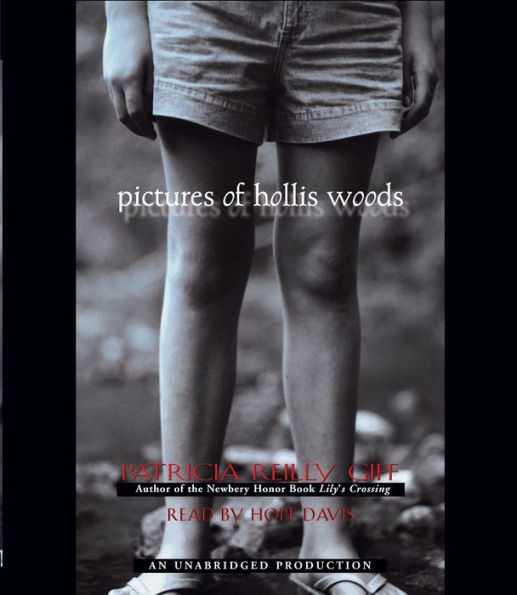Giff (Lily s Crossing; All the Way Home) again introduces a carefully delineated and sympathetic heroine in this quiet contemporary novel. Artistically talented Hollis Woods, age 12, has made a habit of running away from foster homes, but she s found a place on Long Island where she wants to stay for a while. She immediately bonds with Josie, her new guardian, who is a slightly eccentric, retired art teacher. Yet Hollis is far from content. She worries about Josie s increasing forgetfulness, and she sorely misses her last foster family, the Regans, whom she left under tense circumstances that are only gradually made clear. Giff intersperses tender scenes demonstrating Hollis s growing affection for Josie with memories of the Regans, whose images Hollis preserves in her sketchbook. Pictures of motherly Izzy Regan, her architect husband and their mischievous yet compassionate son, Steven, sensitively express the young artist s conception of a perfect family. As readers become intimately acquainted with Hollis, they will come to understand her fears, regrets and longings, and will root for her as she pursues her dream of finding a home where she belongs. Copyright 2002 Cahners Business Information.
This Newbery Honor book about a girl who has never known family fighting for her first true home “will leave readers . . . satisfied” (Kirkus Reviews).
*
Hollis Woods
is the place where a baby was abandoned
is the baby's name
is an artist
is now a twelve-year-old girl
who's been in so many foster homes she can hardly remember them all.
*
When Hollis is sent to Josie, an elderly artist who is quirky and affectionate, she wants to stay. But Josie is growing more forgetful every day. If Social Services finds out, they'll take Hollis away and move Josie into a home. Well, Hollis Woods won't let anyone separate them. She's escaped the system before; this time, she's taking Josie with her. Still, even as she plans her future with Josie, Hollis dreams of the past summer with the Regans, fixing each special moment of her days with them in pictures she'll never forget.
*
Patricia Reilly Giff captures the yearning for a place to belong in this warmhearted story, which stresses the importance of artistic vision, creativity, and above all, family.
"1100289889"
*
Hollis Woods
is the place where a baby was abandoned
is the baby's name
is an artist
is now a twelve-year-old girl
who's been in so many foster homes she can hardly remember them all.
*
When Hollis is sent to Josie, an elderly artist who is quirky and affectionate, she wants to stay. But Josie is growing more forgetful every day. If Social Services finds out, they'll take Hollis away and move Josie into a home. Well, Hollis Woods won't let anyone separate them. She's escaped the system before; this time, she's taking Josie with her. Still, even as she plans her future with Josie, Hollis dreams of the past summer with the Regans, fixing each special moment of her days with them in pictures she'll never forget.
*
Patricia Reilly Giff captures the yearning for a place to belong in this warmhearted story, which stresses the importance of artistic vision, creativity, and above all, family.
Pictures of Hollis Woods
This Newbery Honor book about a girl who has never known family fighting for her first true home “will leave readers . . . satisfied” (Kirkus Reviews).
*
Hollis Woods
is the place where a baby was abandoned
is the baby's name
is an artist
is now a twelve-year-old girl
who's been in so many foster homes she can hardly remember them all.
*
When Hollis is sent to Josie, an elderly artist who is quirky and affectionate, she wants to stay. But Josie is growing more forgetful every day. If Social Services finds out, they'll take Hollis away and move Josie into a home. Well, Hollis Woods won't let anyone separate them. She's escaped the system before; this time, she's taking Josie with her. Still, even as she plans her future with Josie, Hollis dreams of the past summer with the Regans, fixing each special moment of her days with them in pictures she'll never forget.
*
Patricia Reilly Giff captures the yearning for a place to belong in this warmhearted story, which stresses the importance of artistic vision, creativity, and above all, family.
*
Hollis Woods
is the place where a baby was abandoned
is the baby's name
is an artist
is now a twelve-year-old girl
who's been in so many foster homes she can hardly remember them all.
*
When Hollis is sent to Josie, an elderly artist who is quirky and affectionate, she wants to stay. But Josie is growing more forgetful every day. If Social Services finds out, they'll take Hollis away and move Josie into a home. Well, Hollis Woods won't let anyone separate them. She's escaped the system before; this time, she's taking Josie with her. Still, even as she plans her future with Josie, Hollis dreams of the past summer with the Regans, fixing each special moment of her days with them in pictures she'll never forget.
*
Patricia Reilly Giff captures the yearning for a place to belong in this warmhearted story, which stresses the importance of artistic vision, creativity, and above all, family.
8.95
In Stock
5
1
8.95
In Stock

Editorial Reviews
Product Details
| BN ID: | 2940169495119 |
|---|---|
| Publisher: | Penguin Random House |
| Publication date: | 09/10/2002 |
| Edition description: | Unabridged |
| Age Range: | 8 - 11 Years |
Videos

From the B&N Reads Blog

